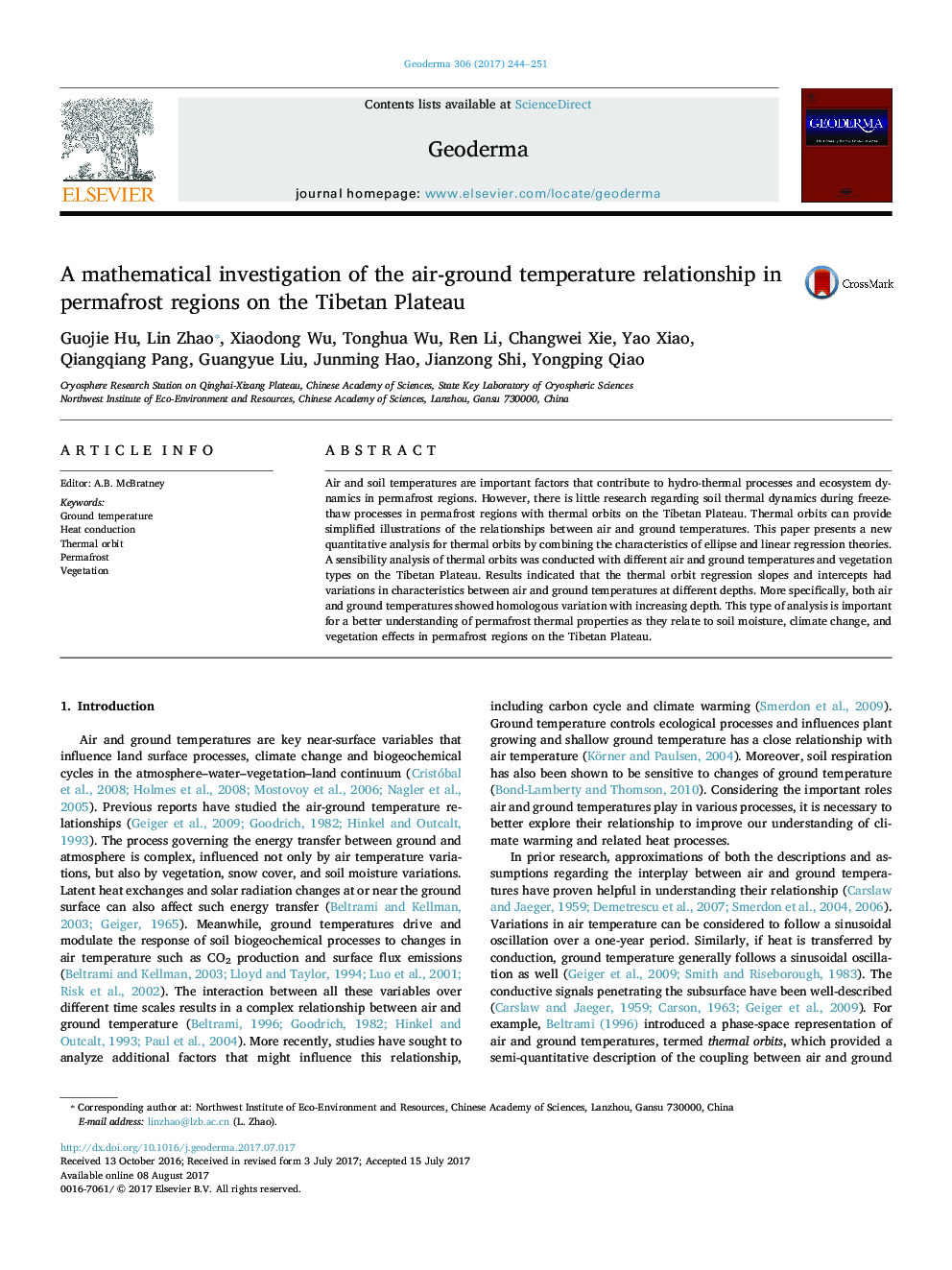| Article ID | Journal | Published Year | Pages | File Type |
|---|---|---|---|---|
| 5770475 | Geoderma | 2017 | 8 Pages |
â¢Develop a new quantitative method for the thermal orbit regression analysisâ¢Evaluate the performance of the new method on Tibetan Plateauâ¢Analyze trends in characteristics of air-ground temperatures with different types of vegetation
Air and soil temperatures are important factors that contribute to hydro-thermal processes and ecosystem dynamics in permafrost regions. However, there is little research regarding soil thermal dynamics during freeze-thaw processes in permafrost regions with thermal orbits on the Tibetan Plateau. Thermal orbits can provide simplified illustrations of the relationships between air and ground temperatures. This paper presents a new quantitative analysis for thermal orbits by combining the characteristics of ellipse and linear regression theories. A sensibility analysis of thermal orbits was conducted with different air and ground temperatures and vegetation types on the Tibetan Plateau. Results indicated that the thermal orbit regression slopes and intercepts had variations in characteristics between air and ground temperatures at different depths. More specifically, both air and ground temperatures showed homologous variation with increasing depth. This type of analysis is important for a better understanding of permafrost thermal properties as they relate to soil moisture, climate change, and vegetation effects in permafrost regions on the Tibetan Plateau.
